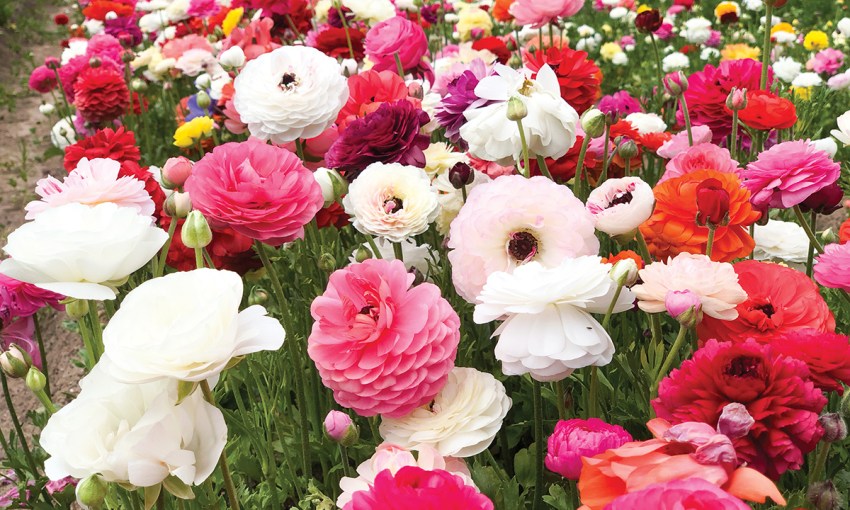Bulbs are the batteries of the gardening world, it's not too late to plant out now to colour and energise your yard this coming spring.
Bulbs: Blooming brilliant
Timing is a critical part of gardening and the cooling soil and shorter days create the perfect opportunity to plant out a huge selection of spring-flowering bulbs. If you are into no-fuss gardening, these dormant beauties are definitely your best friend.
The wonderful part about gardening with bulbs is their ease and flexibility of planting, be it in-ground, in pots or a bit of both. Whether it’s a swathe of spectacular tulips or a container of bright-blooming jonquils, from gardens big to balcony there’s always room for a spring-flowering bulb.
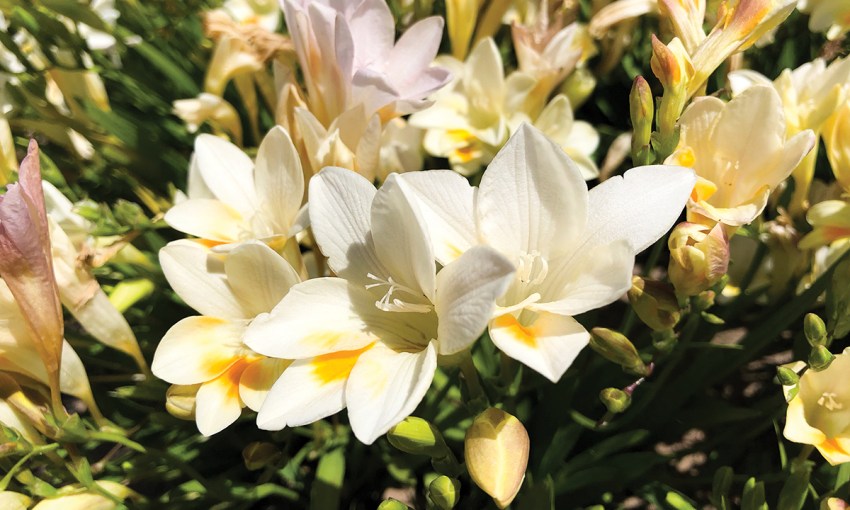
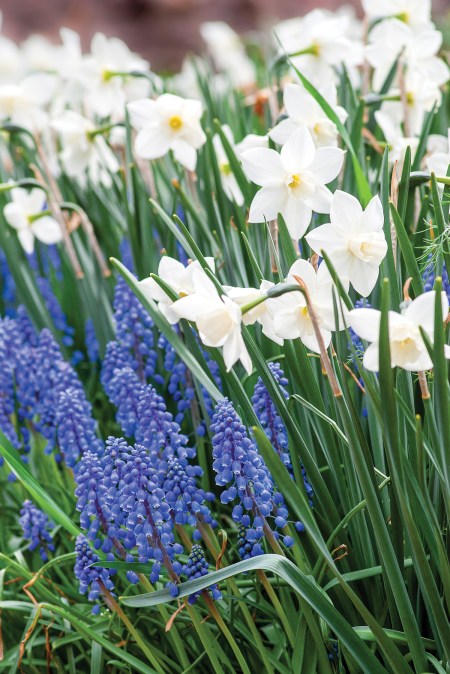
Bulbs are the ultimate yo-yo plant. Starting as a small, seemingly lifeless underground object in autumn the bulb uses its abundant stored energy to produce a maze of roots and emerging shoots that culminate in a dazzling spring floral display. Once that blooming finishes, the foliage dies back and shoots plus roots retreat to the safety of the bulb in readiness for next autumn. It is one of nature’s true delights.
There are many elements to achieve bulb-growing success. The first is starting with a quality bulb, free of disease and guaranteed to grow. Best places for that are your local garden centre or head online to the many mail-order nurseries sites. Not only are these top spots for buying garden-ready bulbs, they are also the best places to make your spring bulb selection. You’ll be amazed at the range and diversity on offer, the most difficult decision will be choosing which varieties to buy.
Also, when planning out a bulb garden, consider they look best when mimicking their natural clumping form in drifts as opposed to single lines.
Location is also important. Bulbs like full sun to part shade. The more shade, the longer and softer the top growth and more susceptible to blowing over and damage.
The better prepared the soil, the better the plants that grow in it. Dig the ground over to help loosen the soil, making it easier for roots to spread and shoots to work their way upwards. A good layer of well-aged manure or compost along with a sprinkle of an organic-based fertiliser such as Dynamic Lifter or Rapid Raiser worked in will keep the earthworms and soil microbes happy, along with ensuring a good reservoir of nutrients for those emerging roots.
The bulb’s greatest enemy is poor drainage; that’s why it is critical to avoid spots in the garden that have pooling water. If drainage is a problem, dig in gypsum to assist in opening up the soil. Heavy clay soils are notoriously difficult to drain and may need a number of gypsum applications to improve.
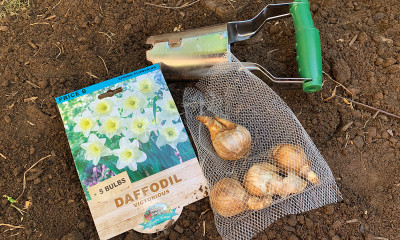
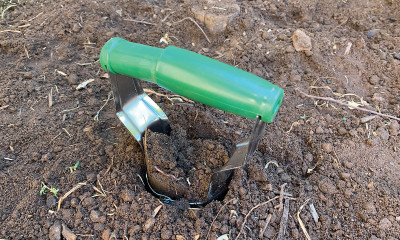
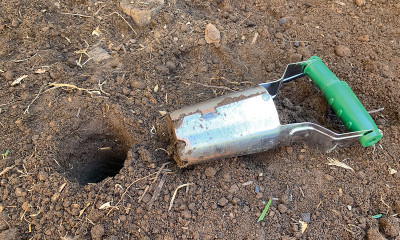

Containers are a fantastic alternative to inground planting and have the advantage of good drainage and portability. Big, small, deep or shallow, nearly every pot is a potential bulb grower. Just check to see if there are drainage holes at the bottom and you’re good to go. Fill the container with a premium grade potting mix, these incorporate slow-release fertiliser to help feed that growing plant.
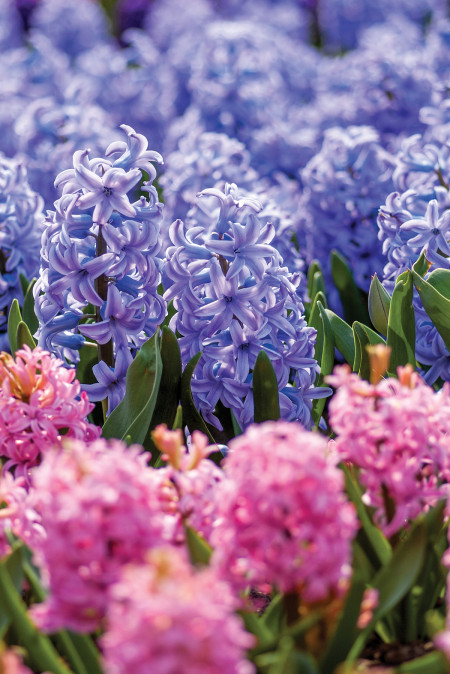
Now, to plant. As bulbs come in all shapes and sizes, knowing which way up or down they need to be planted is a common conundrum. Daffodils, hyacinths and tulips, along with crocus, freesias and gladioli have a pointy end and a flat end – keep the pointy end up. Ranunculus have fingers that should be planted pointing down. If in doubt as to which orientation to plant a bulb, best to plant it on its side, the top shoots will still head up and the roots the opposite.
While orientation is important, planting depth is even more critical. Planted too deep, the bulb may use too much of its stored energy to push the growing shoot through the surface and not have enough to produce a flower. Also, too deep and you risk of waterlogging and rotting. Planted too shallow, they can dry out and become temperature affected. While the general rule is to plant around twice as deep as the bulb’s height, it’s vital to check the label to confirm correct planting depth. Also, avoid overcrowding, as this too will reduce flowering and performance.
Dampen the soil and get planting. Poke a hole with your finger, a stake or trowel to the correct depth, place the bulb (right way up if possible) and fill in the soil. Hand-held bulb planter tools, available from your local garden centre, are a hollow cylinder that cuts and removes a small block of soil allowing better access to lay the bulb. When planting in containers, avoid planting too close to the edge, which tends to get hot and dry which can damage the bulb. Once planted, give the potting mix or soil a good soak and keep it moist but not over wet. Winter rains generally do the work for you.
Bulbs tend not to be too fussy when it comes to fertilising and there are plenty of varied recipes to keep them doing their very best. Here’s mine. Once new shoots begin to emerge, apply a top dressing of Organic+ All Purpose Plant Food and fortnightly applications of Thrive Flower & Fruit Soluble Fertiliser. Keep feeding until the flowering has finished and plants begin to die down, the nutrients will be taken down to recharge the bulb for the next growing season.
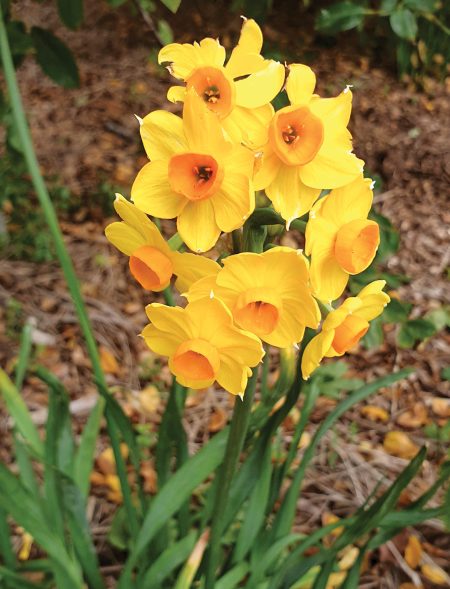
To lift or not to lift? After the top growth has completely disappeared and the bulb is back to its dormant state, the question of whether to lift and store the bulbs is often asked. For most gardeners, the idea of having to dig and replant is certainly not overly appealing and for many types such as daffodils, hyacinths, ranunculus and freesias, they will happily stay and multiply. Tulips and other bulbs which benefit from chilling often produce a poor second crop. In these cases, it’s best to treat them as annuals and purchase new stock each season.
If lifting bulbs, take care to avoid any damage to the bulb and store in a cool, dry and dark location. For bulbs left to naturalise, over the years they tend to crowd each other resulting in smaller growth and fewer blooms. When this occurs, dig up, divide, spread out and replant. You can give away your excess bulbs or start a new patch.
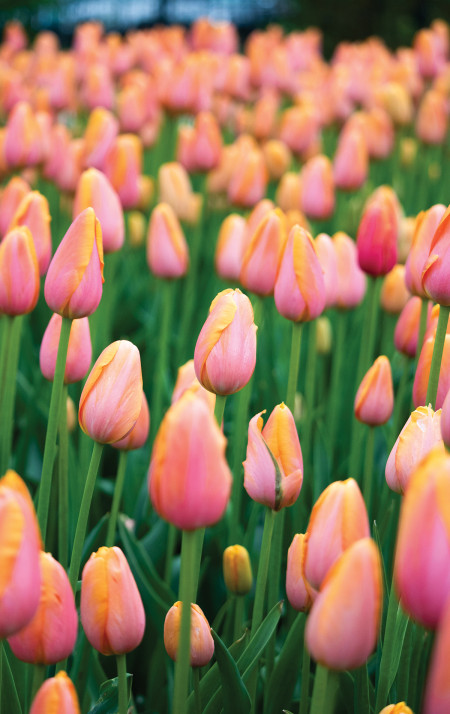
Remember, it’s vitally important to keep your expanding bulb population within the perimeter of your garden, to stop them from spreading into native habitats. Growing in pots is a very simple solution to containing any potential garden escapees.
There’s such a wide selection of bulbs available. By choosing and planting a mix of early, mid and later season varieties, you can have bursts of beautiful, blooming bulbs from mid-August until late spring.
While spring may seem a long way off, especially with a long, cold winter looming ahead, a top way to ready your garden for a colourful start to the warmer months is to plant out a selection of bulbs now.
Shake away those winter blues with some top-performing bulbs for the South Australian garden:
Allium Long stalks with rounded, fireworks-type flowers atop. Yes, onions are part of this family.
Anemones Light and airy they add whimsy to the garden and can tolerate shade.
Daffodils and jonquils A spring garden must-have! Plant and leave to enjoy year after year.
Dutch iris A true delight. Spectacular, hardy, long flowering and easy care, what more could you want?
Freesia Trumpet-shaped flowers in a range of colours that are real treats and highly scented.
Hyacinth Long, spiked flowers in hues of many colours with a distinct and complex fragrance.
Grape hyacinth Everything a hyacinth does, but smaller.
Ranunculus Straight, upright stem and bedazzling blooms make a perfect cut flower.
Tulip A spring highlight, loads of colours and styles. Leave in the crisper section of the fridge for four to six weeks before planting.
This story first appeared in the May 2021 issue of SALIFE magazine.



